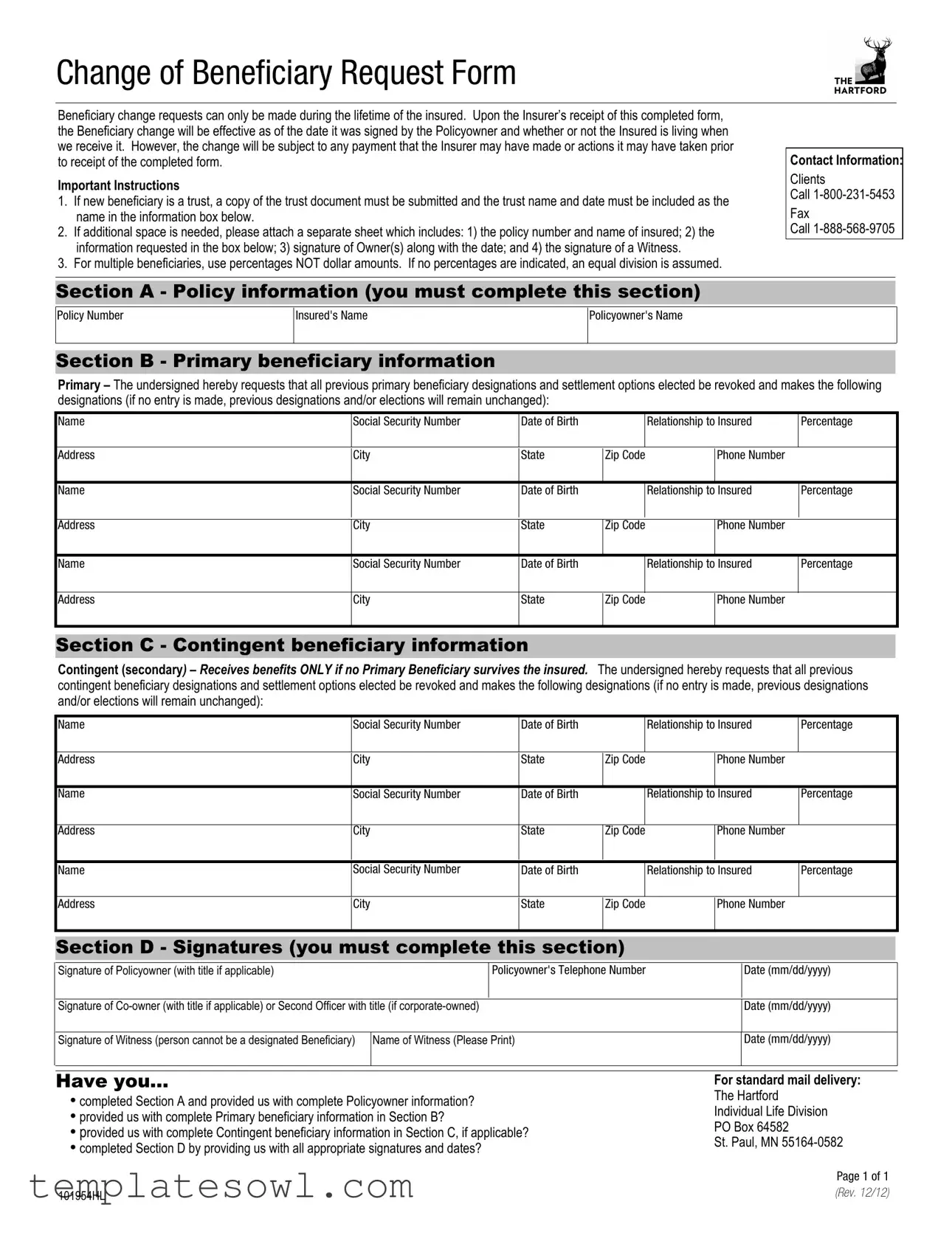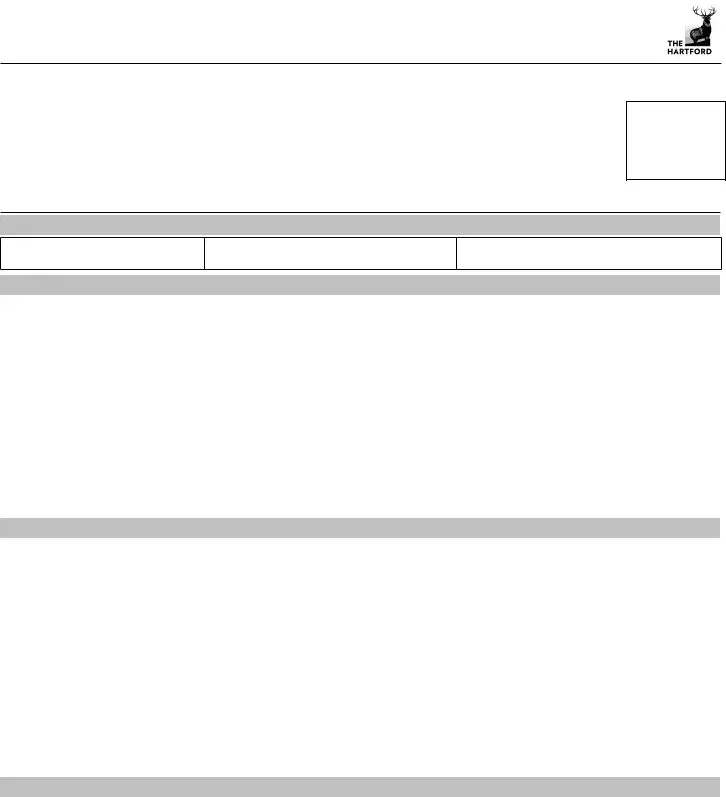What is the purpose of the Change of Beneficiary Request form?
The Change of Beneficiary Request form allows policyowners to update who will receive the benefits of their policy in the event of the insured's passing. This change can only be made while the insured is alive and is effective immediately upon receipt of the completed form by the insurer. However, the change will be subject to any actions or payments made by the insurer prior to receiving the form.
What information is needed to complete the form?
The form requires specific information about the policy and its owner, including the policy number, the names of the insured and policyowner, and complete details about the new beneficiaries. This information includes their names, social security numbers, dates of birth, relationships to the insured, and contact information. If there are multiple beneficiaries, the policyowner must indicate the percentage of benefits each will receive, rather than specific dollar amounts.
What if the new beneficiary is a trust?
If the new beneficiary is a trust, it is necessary to attach a copy of the trust document. Additionally, the trust's name and date must be included in the information section of the form. This ensures that the insurer can accurately identify the trust and process the beneficiary designation correctly.
What should I do if I need more space to list beneficiaries?
If there is insufficient space on the form to list all beneficiaries, a separate sheet can be attached. This sheet should include the policy number, the name of the insured, the information for each beneficiary, and the signatures of the policyowner(s) along with the date. It is crucial to also include a witness's signature, who cannot be a designated beneficiary.
How do I ensure my beneficiary change is effective?

